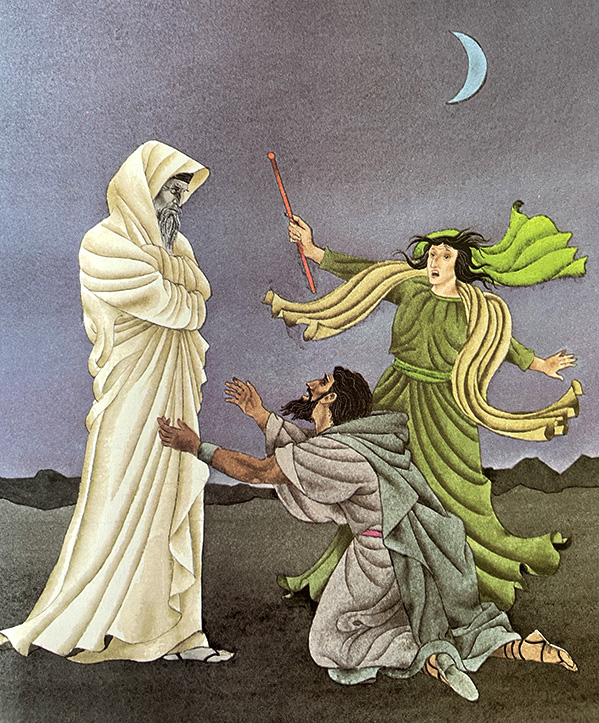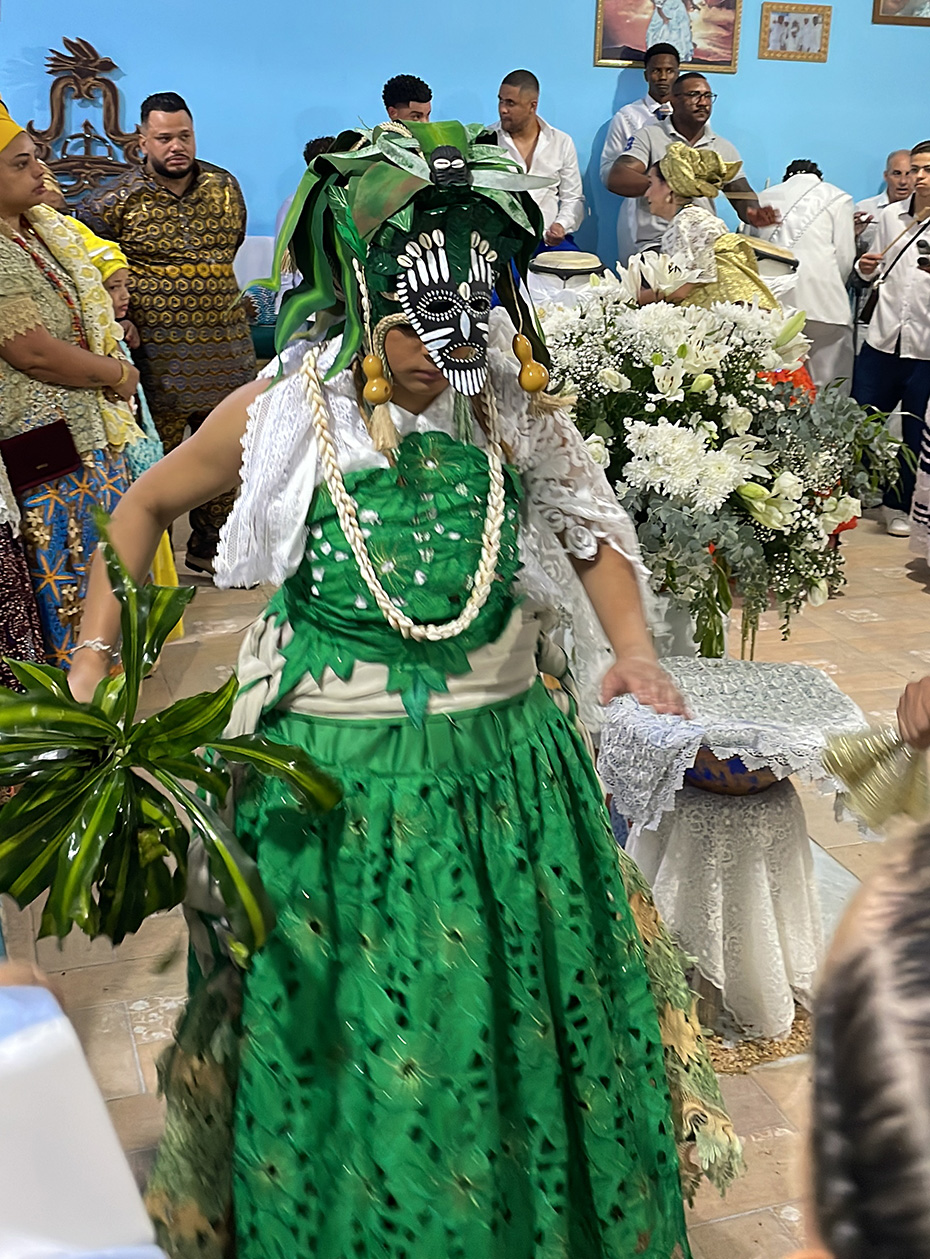Spiritualism
Spiritualism is a metaphysical belief that the world is made up of at least two fundamental substances, matter and spirit. This very broad metaphysical distinction is further developed into many and various forms by the inclusion of details about what spiritual entities exist such as a soul, the afterlife, spirits of the dead, deities and mediums; as well as details about the nature of the relationship between spirit and matter.
Spiritualistic traditions are deeply rooted in shamanism and perhaps are one of the oldest forms of religion. From a ritual magic perspective, the practices may be considered a form of necromancy.
Central beliefs
The core element is spiritualist belief is that there is an immaterial reality which cannot be perceived by the senses.
This includes belief in one or more of the following ideas:
- a personal God
- the immortality of the soul
- the immortality of the intellect or will
- a universal mind or cosmic forces lying beyond the reach of purely materialistic interpretations.
Generally, any philosophical position, be it dualism, monism, atheism, theism, pantheism, idealism or any other, is compatible with spiritualism as long as it allows for a reality beyond matter.
Definition
A narrower definition of spiritualism is: "the belief that spirits are able to communicate with the living by agency of a medium, generally through a processes such as channeling."
The earliest recorded use of the word is 1796 and it was used by the prominent 18th-century spiritualist Emanuel Swedenborg. The word also takes on specific alternative meanings in various differing fields of academia.
Spiritualist methods and activities
The phenomena of spiritualism consist of may esoteric practices, some of which have been adopted by the New Age movement:
- prophecy
- clairvoyance
- speaking in tongues
- laying on of hands
- trance
- revelations
- automatic and independent writing and painting
- materialization
Use of mediums

Spiritualists believe in the possibility of communication with the spirits of dead people, whom they regard as "discarnate humans." They believe that spirit mediums are gifted to carry on such communication, but that anyone may become a medium through study and practice. They believe that spirits are capable of growth and perfection, progressing through higher spheres or planes.
According to spiritualists, anyone may receive spirit messages, but formal communication sessions (séances) are held by mediums, who claim thereby to receive information about the afterlife.
Spiritualist religious movement
Spiritualism is a social religious movement, popular in the nineteenth and early twentieth centuries, according to which an individual's awareness persists after death and may be contacted by the living. The afterlife, or the "spirit world," is seen by spiritualists not as a static place, but as one in which spirits continue to interact and evolve. These two beliefs—that contact with spirits is possible, and that spirits are more advanced than humans—lead spiritualists to the belief that spirits are capable of advising the living on moral and ethical issues and the nature of God.
Origins
Spiritualists often set March 31, 1848, as the beginning of their movement. On that date, Kate and Margaret Fox, of Hydesville, New York, reported that they had made contact with a spirit that was later claimed to be the spirit of a murdered peddler whose body was found in the house, though no record of such a person was ever found. The spirit was said to have communicated through rapping noises, audible to onlookers. The evidence of the senses appealed to practically minded Americans, and the Fox sisters became a sensation. As the first celebrity mediums, the sisters quickly became famous for their public séances in New York. However, in 1888 the Fox sisters admitted that this contact with the spirit was a hoax, though shortly afterward they recanted that admission.
In the years following the sensation that greeted the Fox sisters, demonstrations of mediumship (séances and automatic writing, for example) proved to be a profitable venture, and soon became popular forms of entertainment and spiritual catharsis. The Fox sisters earned a living this way and others followed their lead. Showmanship became an increasingly important part of spiritualism, and the visible, audible, and tangible evidence of spirits escalated as mediums competed for paying audiences.
One well known case is that of Mary Todd Lincoln who, grieving the loss of her son, organized séances in the White House which were attended by her husband, President Abraham Lincoln.
Native American spiritualism
Representations of Native Americans images have played a significant role in nineteenth and twentieth century spiritualism, although in reality Natives and their tradition have suffered considerably under the influences of competing Christian churches. Since 1970, there have been a number of individuals purporting to sell Native American spiritualism, sometimes called '"American Indian Spiritualism."
The spread of these beliefs began with a number of literary hoaxes undertaken by non-Indians such as Carlos Castaneda and Jamake Highwater. Several Native Americans have also sought to exploit interest in Native American spiritualism as part of New Age spirituality, writing distortions of indigenous spiritual practices and knowledge for consumption in the mass market. This situation has been attacked by legitimate Indian scholars and by activists.
South America

Definitions of spirit possession, channelling and mediumship within the African diaspora religions corresponds with the majority view of spirit possession worldwide. There are a number of descriptions available concerning what happens when someone becomes possessed, but in general, practictioners are able to communicate/commune with the souls of deceased persons, or natural spirits, through mediumship of the living. During the suppression of Umbanda by the Roman Catholic Church, a period of syncretism commenced that included the introduction of images of the saints present in the churches presenting a new look for repressors behind which the Africans worshipped their gods and ancestors.
This system of equating saints with native spirits is now formalized in many Afro-Brazilian religions, most prominently Candomblé.
Abrahamic religions
In general, the Abrahamic religions do not condone spiritualist practices, despite subtly incorporating many spiritualist doctrines into their own belief systems. The most fundamental example of this is belief in possession by the Holy Spirit by new converts to Christianity, as well as belief in the possibility of demon possession, as evidenced by the use of exorcists.
Judaism
Spiritists cite biblical examples of interactions with spirits of the dead as evidence for the validity of their beliefs. Moses' prohibition of "consulting the dead," for example, would be evidence of the Jewish belief in this possibility, since something impossible to do would not be prohibited. The most significant story of channeling in the Old Testament is he consultation of Saul, the first king of the ancient Kingdom of Israel, with the Witch of Endor (1 Samuel 28). She is an oracle who sees and hears the disembodied spirit of Samuel, the last of the judges of Israel and the first of the prophets recorded in the history of his people.
Christianity
The Catechism of the Catholic Church (paragraph 2117) states that "Spiritism often implies divination or magical practices; the Church, for her part, warns the faithful against it."
The spiritist doctrine adopts Christian morality, despite its differentiated theological conceptions. According to spiritists, Jesus Christ is the most elevated spirit to have ever incarnated on Earth, a belief which is incorporated into teachings about the Ascended Masters. Many spiritualists consider themselves Christians because they follow the moral teachings of Jesus.
Islam
Spiritualism is practised, but not condoned, in some Islamic societies. The Sufi sect of Dervishes are referred to as "Eastern Spiritualists." Likewise, in the Zār cult, mostly located in Sudan, Egypt, and Iran.
Demographics
According to data from 2005, spiritism has about 13 million followers worldwide, and is present as a religious tradition in 36 countries, being most widespread in Brazil, where it has approximately 3.8 million followers, according to the data from the Brazilian Institute of Geography and Statistics, and over 30 million sympathizers, according to the Brazilian Spiritist Federation.
The doctrine has had a strong influence on various other religious currents, such as Santería, Quimbanda, and New Age movements.
Criticisms
Stage magicians and writers on performance magic have a long history of exposing the fraudulent methods of mediumship. During the 1920s, professional magician Harry Houdini undertook a well-publicised campaign to expose fraudulent mediums; he was adamant that "Up to the present time everything that I have investigated has been the result of deluded brains."
The Theosophical Society, a competing new religious movement, saw the spiritist explanations for metaphysical phenomena as too simple or even naïve.
In Brazil, Catholic priests Carlos Kloppenburg and Óscar González-Quevedo, among others, have written extensively against spiritism from both a doctrinal and parapsychological perspective. Quevedo, in particular, has sought to show that spiritism's claims of being a science are invalid.
Famous spiritualist practitioners
- The Witch of Endor
- Hélène Smith
- Eva Carrière - French medium
- Helen Duncan - British medium
- Edgar Cayce - modern American medium/psychic
- Uri Geller - modern British-Israeli medium/psychic
- Gary Spivey - modern American medium
- John Edward - modern American medium
In popular culture
The television series Medium (2005), produced by NBC, features a protagonist who uses her mediumship to assist a public prosecutor in solving crimes.
The Dead Zone (1983) is a film starring Christopher Walken as a medium and psychic who is able to see the future by touching a person's hand.